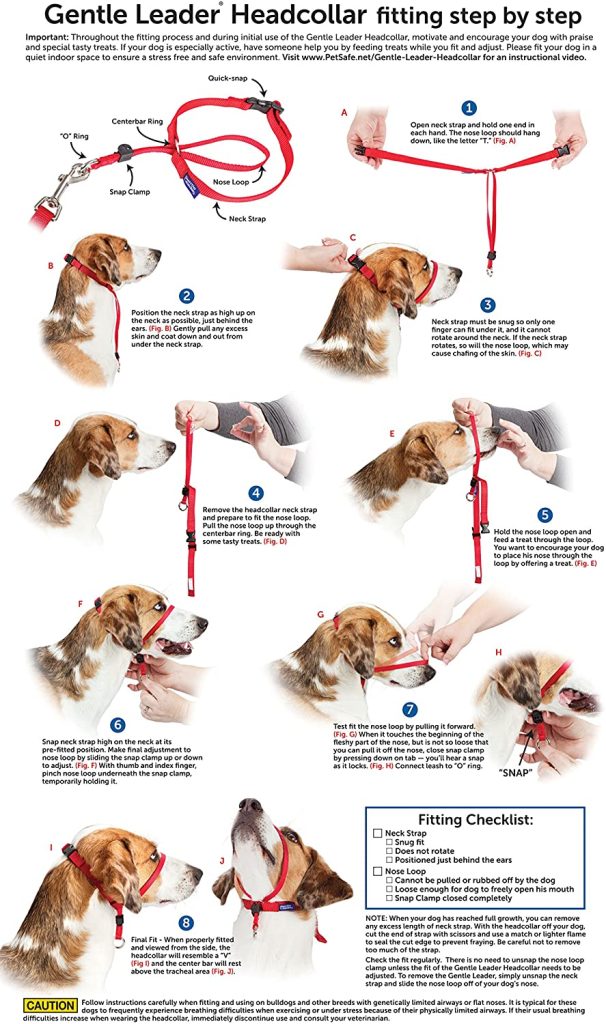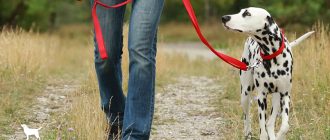If you’re a dog owner, you may be wondering whether a nose lead is good for your dog. You may also have questions about whether head halters are cruel to dogs. To answer these questions, read this article. We’ll discuss how to use a nose lead for your dog and how to use it correctly. Also, we’ll address whether or not a nose lead is good for stopping your dog from pulling.
Are nose leads good for dogs?
Nose leads can be useful training aids. They prevent your dog from pulling on the leash. Dogs tend to greet other dogs in a certain way. They approach other dogs in a banana curve, sniff each other’s noses, and then turn and sniff the other dog again. If the dog does not know you, they may move on after a few seconds. They may play together or even fight with each other if they are off-leash.

Are head halters cruel?
Head halters are popular and have many benefits for the owner, but the question remains: are head ties really cruel for dogs? While some dog owners argue that using head ties will teach a dog to stay still, there are numerous concerns. While head ties do help your dog remain on a leash, there are numerous psychological risks to using them. As a result, many professionals recommend not using them at all, and many associations have strict ethics codes against the use of head ties.
Haltis, or head collars, aren’t cruel, but they can cause irritation and may not be suitable for all dogs. Proper fit and proper training is necessary to get your dog to accept the harness. The use of slip-chain collars poses a danger of injury to the neck, and head halters jerk your dog’s head around, affecting his demeanor and behavior. Lastly, improperly fitting and using a head halter can cause your dog to become accustom to a collar, which may contribute to behavioral issues.
How do you use a dog’s nose lead?
Top-10 Dog Leashes
| Image | Price | Buy | Prime | Title |
|---|---|---|---|---|
 Top Top | Buy on Amazon | PrimeEligible | TUG 360° Tangle-Free Retractable Dog Leash | 16 ft Strong Nylon Tape | One-Handed Brake, Pause, Lock (Medium, White) | |
 Top Top | Buy on Amazon | PrimeEligible | BAAPET 2/4/5/6 FT Dog Leash with Comfortable Padded Handle and Highly Reflective Threads for Small Medium and Large Dogs (5FT-1/2'', Black) | |
 Top Top | Buy on Amazon | PrimeEligible | Fida Retractable Dog Leash, 16 ft Dog Walking Leash for Small Dogs up to 26 lbs, 360° Tangle Free, Black | |
 Top Top | Buy on Amazon | PrimeEligible | iYoShop Hands Free Dog Leash with Zipper Pouch, Dual Padded Handles and Durable Bungee for Walking, Jogging and Running Your Dog (Large, 25-120 lbs, Black) | |
 Top Top | Buy on Amazon | PrimeEligible | Mighty Paw Retractable Dog Leash 2.0 | 16' Heavy Duty Reflective Nylon Tape Lead for Pets up to 110lbs. Tangle Free Design W/One Touch Quick-Lock Braking System & Anti-Slip Handle (Green/Lite) |
As an Amazon Associate we earn from qualifying purchases.
When using a dog’s nose lead, you should make sure it fits correctly and doesn’t rotate around the dog’s neck. To ensure a comfortable fit, you can use a soft material, such as Mole Skin, on the underside of the nose loop. It’s also a good idea to use soft material on the dog’s mouth and cheeks, since this will prevent the nose lead from coming undone.
The first step is to keep your dog’s attention. Make sure they’re focused on you by being animated and talking to them constantly. If you’re having trouble keeping them focused, try using a lure or small, tasty rewards to keep their attention. Training can start indoors, or outside in the yard. Once you’ve become comfortable with the procedure, you can progress to a short walk, where you can change directions frequently and reward the dog for a good behavior.
Do head halters stop pulling?
While no halter is going to stop your dog from pulling on a nose leash immediately, it may help mitigate the problem. Head halters loop over the dog’s muzzle and apply gentle pressure, pulling the dog’s chin downward. These devices may reduce the force required by your dog to pull on a leash, which is helpful for those who are training a new dog.
While head halters have their benefits, they do have their drawbacks. Some dogs cannot adjust to wearing one and may even develop a reaction to them. Dogs can eat while wearing one, but it will take some time for them to get used to it. Some dogs will roll around and paw at the halter, while others never adjust to wearing it. The straps may cause injuries to the dog’s neck or spine.
How do you stop a dog from pulling?
One way to curb a dog’s urge to pull on a leash is to use a head harness. Not to be confused with a dog collar, this small harness fits around your dog’s head and has an attachment to a leash under its chin. When your dog pulls against this attachment, the dog’s body will be turned toward you, which diverts his attention from you and away from the situation.
Head halters are a good alternative to collars. These attachments fit on your dog’s nose and attach to the leash underneath its chin. They are most effective when you’re jogging or trying to train a dog that pulls on a leash. Head halters help stop the dog’s urge to pull by gently steering the dog’s head back toward you when it starts pulling. Chest-led harnesses attach to the dog’s chest and help turn it around when it starts to pull.
How to Use a Nose Leash For Dogs

A nose leash for dogs is one of the most common forms of dog training, and is used by trainers to control barking and pulling. This type of leash has two main advantages over others: It is easily adjustable, making it a perfect fit for all sizes of dogs. This type of leash is also highly recommended for dogs with sensitive noses. Its soft side will prevent your dog from rotating it. However, there are certain things to keep in mind when using a nose leash to control your dog.
Do gentle leaders help with barking?
Does a Gentle Leader really help with barking? It will depend on the situation. Many dogs hate these collars, either because they are too tight or because they do not fit properly. The nose band should be loose enough to fit a finger under, but not loose enough that it falls off. Be sure to watch your dog for signs that he is distressed. If he starts to thrash or whine, remove the Gentle Leader.
A gentle leader works by gently turning the dog’s body and head when it pulls on the leash. It’s an effective tool for calming many breeds, from barking to the rambunctious. However, it’s important to remember that it is not a solution and should still be trained using proper etiquette. Using a gentle leader will not stop a dog from barking, but it can make the situation a bit less stressful for both you and your pooch.
How do I stop my dog from pulling when walking?
There are several ways to stop your dog from pulling when you walk it. The main thing is not to allow your dog to pull to get to where he wants to go. When you walk your dog, make sure he pays attention to you on the leash. When he does this, you will see less pulling. Here are some tips to get your dog to stop pulling while walking. These tricks will make your walks more pleasant for you and your dog.
Reward your dog when he stops pulling. Whether a dog pulls on the leash to go out the door or just to sniff something, be sure to reward him with a treat every time. Remember that training a dog does not happen overnight. It may take a week for him to stop pulling. But if you reward him for it, he will likely repeat the behavior for weeks.
What lead is best for a dog that pulls?
A lead that is wide enough for your hand to go through and a long enough length for your dog to comfortably wear is essential. A long leash is the best choice for an unstructured walk or exploration where your dog can exercise itself safely. Avoid retractable leashes, as these can cause severe friction burn. The following are some tips to use a lead on a dog that pulls.
– Choose a thicker, more durable leash for larger dogs. A thicker leash is less likely to snap under a dog’s pulling, and a thin, more flexible lead is best for a small breed. The material of the leash is also important. Nylon leashes are the most affordable and tend to last longer than leather or chain leashes. If your dog still pulls, seek professional advice from a dog trainer to help you choose the proper leash.
How do I stop my leash pulling in 5 minutes?
If you want your dog to stop nose leash pulling, you must realize that the training process will take time. It requires consistency and patience. You should have a wide supply of treats handy to reward your pet for walking near you. Clicker training is another effective training method. Leash pulling is harmful to a dog, as it puts pressure on its neck and windpipe. Over time, this can cause permanent damage.
The first step to stop nose leash pulling is to re-direct your dog’s attention. The correct response is a sit, which interrupts the tugging behavior. If your dog is stubborn, he may take longer to stop. Then, turn around and face the direction he’s pulling toward. Drop the treat behind you and repeat the process a second time. Repeat this method until your dog stops nose leash pulling.
Are slip leads cruel?
Many people have questioned whether slip leads are cruel to dogs. While they may appear to be a convenient way to train a dog, they are not without risk. For instance, when using a slip leash, the dog must be at rest while you pull on the lead. During the correction process, you can use your strength to pull back on the leash or give a quick tug with immediate release. Aside from being cruel to dogs, slip leads can be very dangerous and potentially harmful to your dog’s trachea or larynx.
While slip leads aren’t necessarily cruel to dogs, they can cause serious injury to untrained dogs. A slip lead can easily become a choke-chain for an untrained dog. It can cause damage to the neck, throat, and spine, and may even cause choking. Because slip leads are so uncomfortable for dogs, they are not a good option for untrained dogs. This article will discuss some alternatives to slip leads.













